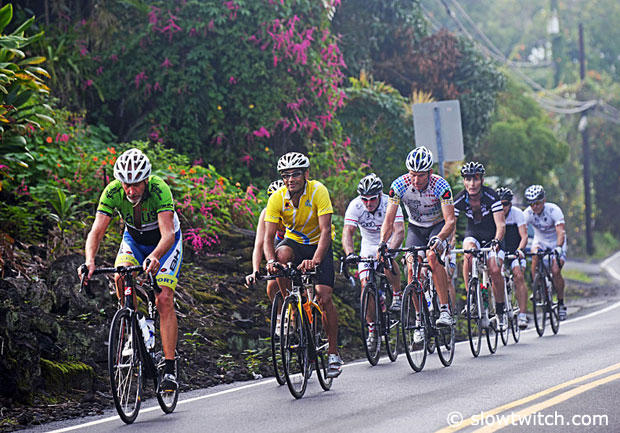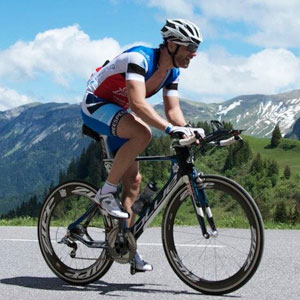A Seoul Lane 6 workout
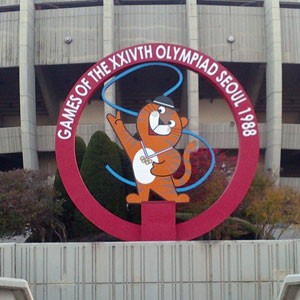
Each one of us needs to make decisions in life on how important shaving a few seconds here and there in racing represents versus the training journey and smelling the roses along the way. Sometimes we get both. Fast races and great experiences – sometimes we get one or the other.
When it comes to telling stories about other athletes, reading about how some guy shaved a few seconds off his PR, can make for a boring read. Rather, reading about some of the interesting things athletes are doing in training, or where they did it, or the group dynamic while doing something special makes for an interesting read. So what we’d like to do is hear from you.
The intent is that every month we’ll try to feature something unique from age group athletes or pros. It may be an open water swim in the Seychelles, a three mountain pass ride over Susten, Furka and Grimsel passes in Switzerland. It could simply by a 20 minute run a lunch in a sandstorm or a snowstorm. Perhaps you did intervals in the underground parking lot in a mall because there was 2 inches of freezing rain on the ground. Really, anything that you feel others might be interested in reading about and use as a tool to inspire their own training. It need not be “over the top” in terms of volume or intensity. Sure, we want to hear about your feats of strength or endurance, but it is not a requirement. Perhaps you used a special workout to remember a friend who is no longer here. If you have been around long enough, you have done a few of those.
So in that vein, I’ll get things kicked off here. In October, I was on a business trip in Seoul, Korea. This was my 4th trip to Seoul over the last 6 years. So it’s not like I am regular in Seoul but at the same time, I had a chance to check the place out in the past, staying close to the 1988 Olympic Park facilities in three previous trips. This is the same place where Janet Evans became a teenage sensation in the Olympic Pool, but the big story was to be the showdown between the Canadian Ben Johnson and LA Olympic darling Carl Lewis. Ben Johnson was the Rome Italy, 1987 IAAF Track and Field world champion. He had blown the doors off the world record in the 100m with a 9.83 clocking. If I am not mistaken this may have been the first sub 9.9 clocking ever.
In 1995 I was in Rome as a Canadian Serviceman in the CSIM World Military Games, representing Canada in triathlon. During the parade of nations, it turns out that when the Canadian team arrived in the Olympic Stadium I was personally standing on the finish line where Ben Johnson had clocked the 9.83 in 1987. It was ironic that they had placed the Canadian team at the finish line of that event. During the Dubin Inquiry, held in Canada after the 1988 Olympics, Johnson admitted to using anabolic steroids during the Rome 87 finals. The IAAF subsequently promoted Carl Lewis to Gold medalist and Jamaican Ray Lewis to silver. Great Britain’s Linford Christie would be moved up to bronze.
Now fast forward the clock to 2012. The last 24 years have almost made us sports fans cynical of the accomplishments in all sports. To some degree, Ben Johnson and his 100m sprinting crew kicked it off, although we certainly know that the history of the Tour de France going back to 1903 is intricately woven with doping stories. Of the 8 finalists in the 1988 Olympic 100m finals, six have either subsequently tested positive or were implicated in some type of steroid scandal.
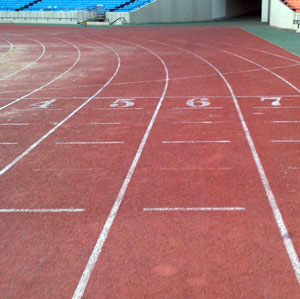
As a young man, the entire Seoul scandal served a valuable lesson. A year after Seoul, I was a young 24 year old Lieutenant in the Canadian Air Force. I was told by an experienced Warrant Officer, “Son, you will be leading men and there will be many times when you will be put into an ethical dilemma. If you are ever in a position that you feel you may need to explain yourself out of, don’t put yourself and your troops there”. At the very same time, Ben Johnson and his peer group of Canadian sprinters, were “explaining themselves” out of their bad decisions during the Dubin Inquiry. If anything that Seoul finals served as a perfect lesson of where you “don’t want to go”.
The glory, the winning, the competitive advantage that comes in sport or business or academics by being on the wrong side of the ethical line, rarely pays. A man must look at himself in the mirror.
Given that climate it was ironic that in the month of Oct 2012, I’d find myself back in Seoul, with an opportunity to reflect on all of this. Thanks to Google maps, you can check out a venue in most large cities on earth and then using street view you can even get a preview of what the place may look like when you go running. I typically plug in the address of my hotel and look at Google satellite view. This gives me an idea of what paths, roads or parks are in the vicinity. I noted a group of stadiums which appeared to be a few kilometers from the hotel, and zooming in, it was clear this was the Seoul Olympic stadium. I used street view to determine where there may even be entrances to the stadium. In the back of my mind I was “hoping” that perhaps I can somehow get into the stadium and run on lane 6 where Ben Johnson did his 9.79s 100m.
The guys at Google street view did a fine job in providing an accurate view of things around the stadium. I ran around to where the entrance “should be.” At every Olympic stadium there is a warm up track interconnected to the main stadium. So once I got into the warm up track, it was a matter of seeing if the tunnel to the main stadium was open.
I struck gold as there were some Korean workers doing maintenance work on the infield. A few gestures later, I was inside the 60,000 seat stadium, 24 years after viewing this place on CBC TV on an evening in Canada. The 100m finals were held in the morning in Korea so that it would catch east coast USA prime time. Carl Lewis was defending his 100m title from the LA Olympics. The US networks really had this pumped up as the main event. Ben Johnson the current world record holder.
My workout would be pretty simple. 20×100 acceleration or sprint. The first “set was warming up the sprinting muscles and range of motion with 8x100m accelerations, once for each of the finalists from lane 8 down to lane 1: Dennis Mitchell, USA, lane 8, Desai Williams of Canada lane 7, , Ben Johnson Canada, lane 6, Calvin Smith USA, lane 5, Linford Christie, Great Britain, Lane 4, Carl Lewis, USA, Lane 3, Ray Lewis, Jamaica, Lane 2, Robson DaSilva, Brazil, Lane 1.
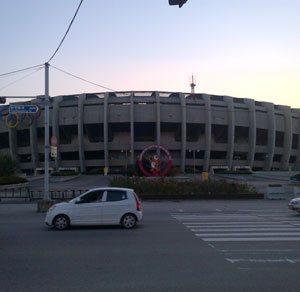
Nothing like trying to sprint after spending 16 hours in airplanes in the preceding 24 hours, but an empty stadium and playing back that 100m, sprinting final representing each of the athletes was interesting, in a “make believe type of way”. At 47 the sprinting legs can’t get anywhere near where they could 3 decades ago. That’s OK. It is just fun being able to “sprint” no matter how slow relative to the spring of youth.
The nice thing about the sport of triathlon is that we get to race “in the same stadium on the same day” as the top professionals. You can’t do that as a football player, or baseball player. You can do it if you are a marathon runner by showing up to race Boston, Rotterdam, New York, Berlin or London or , but you can’t if you are a sprinter. As a former sprinter, this was as close as it would get. An empty Seoul Olympic stadium in the same lanes as the fastest men on earth (doped or not).
After the warm up “set” was 12x100m, this time I was going to attempt to see if I could do them in around twice the time of the “fastest humans” of the time. I’d need to be breaking 20.2 seconds. I had an outside hope that I could break 2×9.79, which would be 19.58 seconds. No chance. At 47 years old, the best I got to was 20.71 seconds. But it really was a fun workout. It was not long, it was not particularly hard (well it was, I was extremely sore the next day, as I generally don’t do anything like this given my focus on half Ironman racing), but it was certainly satisfying.
It was a chance to reflect on the history from that day. Pro athletes don’t need to be role models, but in their successes and their failures as fans of sport we can learn a lot. In the case of the “failure” of the 1988 finalists, I think we were given the opportunity to learn a lot about which side of the ethics line serves us well in life, be it sport, business, academics or personal interactions.
If you have done an interesting workout that offers some interesting experiences to share with our readers, be it due to the challenge, the environment, the people it was done with, or what it represents, please contact the author on our reader forum, and send a few bullet points and ideally a few pictures. We’ll try to get these stories out monthly.
About the Author: Devashish Paul is a masters triathlon competitor, mentor of aspiring age group ironman athletes and coaches teenagers in XC skiing and soccer. He is based in Ottawa Canada, writing on Slowtwitch.com about triathlon lifestyle and wants to share your unique story about interesting workouts with our readers. We hope to feature one of those stories (or more) every month.


